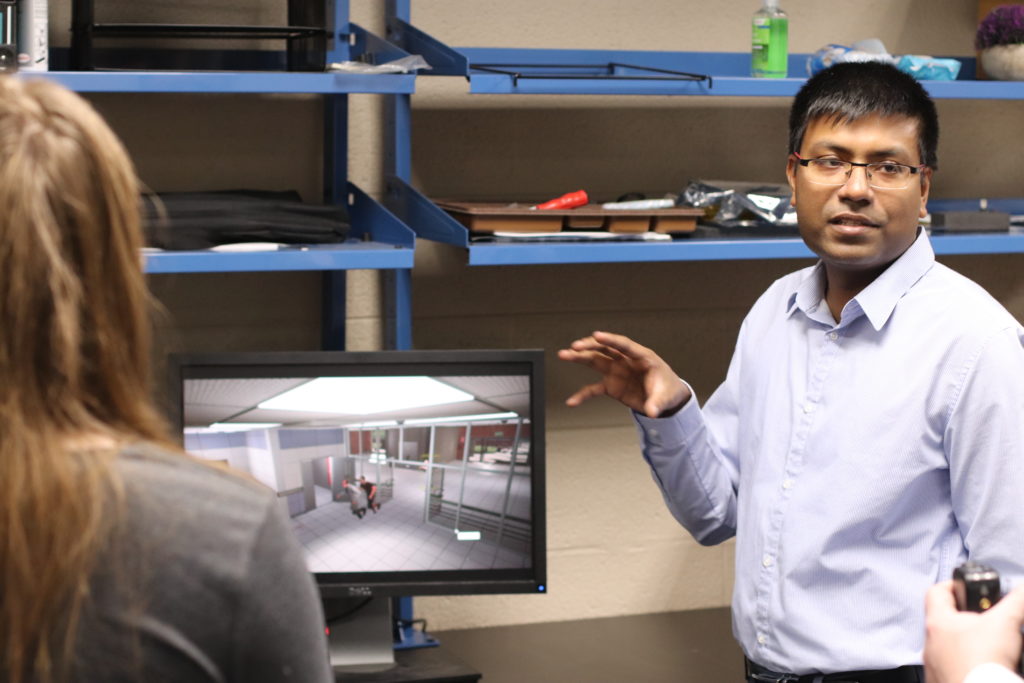 The issue of school shootings and what to do about them can be a polarizing topic, but one in need of a solution nonetheless.
The issue of school shootings and what to do about them can be a polarizing topic, but one in need of a solution nonetheless.
MABE Associate Professor Subhadeep Chakraborty has taken on the heavy burden presented by that challenge, coming up with a system that seeks to improve outcomes in active shooter situations.
Developed along with researchers at Iowa State, Active Shooter Tracking and Evacuation Routing for Survival (ASTERS) uses technology to improve both safety and response times, aiding both school officials and first responders.
“What we’ve come up with is an application that monitors where suspects are, what direction they are going, and what the status of nearby rooms and spaces might be,” Chakraborty said. “We already have technology for monitoring and communication, so we thought ‘Why not put that to good use?’”
In ASTERS, cameras could track the precise location of suspects and any potential victims and send that information to police and medical personnel responding to the call, helping drastically reduce search times for both.
Additionally, the technology would help those within the school make better informed judgments about what their best course of action might be.
Chakraborty said that the idea started with a focus on that aspect in particular, how decisions were being made on the ground in real time.
“We’ve seen cases where students were actually running the wrong direction, heading straight for the gunmen before someone stopped them and turned them around,” he said. “People can make bad choices under pressure, and being in that situation would be among the most stressful moments you can possibly imagine. Simply knowing exactly where the suspect is takes out a lot of the guessing that people have to do.”
In addition to letting people inside the school know where the suspects are via a secure app, he said that the ASTERS system would also take into account the makeup of the locations where students and faculty where when advising them.
For example, if a class was in a room with solid walls and lockable doors, the system might advise them to shelter in place, whereas if they were in a common space like a library or in a room with partitioned walls, it might advise them to move elsewhere or even flee through a window, if available.
The project, which is being funded by the National Science Foundation, has also received written support by UT police at both the Knoxville and Chattanooga campuses.
“It was very important to have their support,” Chakraborty said. “It elevated the project in a way that showed that law enforcement was on board with this idea. I’m very thankful for that.”
Chakraborty said other areas where it was critical to gain support were schools and the communities they serve, noting that if they don’t have buy-in, there’s no way to implement the plan.
He noted that lockdowns have sadly become increasingly routine, but that ASTERS—while it can’t prevent such occurrences— could at least improve outcomes.